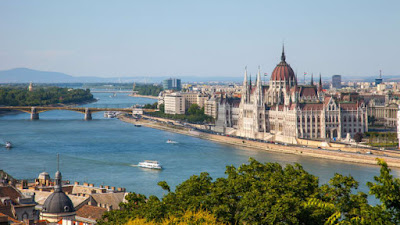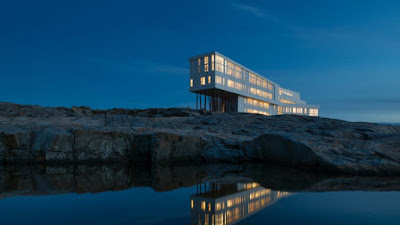Best attractions in Budapest: What you can't miss
Budapest, the capital of Hungary, usually comes as a sweet surprise to travelers, who don't quite know what to expect before visiting this city of 1.7 million.
With the wide Danube winding through its center, one of Europe's most stunning skylines and plenty of fabulous architecture lining the Buda and Pest sides of the river, Budapest can justly claim to be one of Europe's prettiest urban destinations.
These are some of the best attractions you'll find in Budapest when you travel here:
The Danube and its banks
The Danube runs through the center of Budapest, with flat Pest on the east and hilly Buda on the west.
The best way to begin exploring the city is by taking a walk along its banks, where you can take in some of Budapest's most important sights. Points of interest along the Danube include:
-- The Neo-Gothic Parliament, the third-largest in the world.
-- The Buda Castle, started in the 1200s but which has had additions over hundreds of years.
-- Shoes on the Danube, a moving memorial to the Jews who were shot and fell into the Danube during World War II after being ordered to remove their shoes.
-- Gellért Hill, which offers one of the best views of the city.
Tip: If you don't feel like walking, the No. 2 tram on the Pest side runs along the Danube. You also can take tourist boat rides on the river.
Buda Castle, Budapest, Szent György tér 2, 1014 Hungary; +36 1 458 3000
Margaret Island
Budapest's most scenic park, Margaret Island, is a Danube isle between Buda and Pest.
The park holds two swimming pool complexes, a padded jogging path, a petting zoo, an open-air theater, a musical fountain, a restaurant and many picnic spots.
Margaret Island, between Margaret Bridge and Árpád Bridge
Andrássy út
Andrássy út, a wide, tree-lined avenue that begins not far from Deák tér, is the city's most elegant boulevard, lined with architecturally striking buildings. If you have a few hours to spare, leisurely walking the length of the street is a nice way to spend them.
Be sure to admire the Opera House (Andrássy út 22), and if you need a break, stop for a coffee at Művész Kávéház (Andrássy út 29).
The House of Terror (Andrássy út 60) is a powerful museum where you can learn about the grim realities of life in Hungary under the communist and Nazi regimes.
Andrássy út ends at Heroes' Square, where City Park begins. The M1 (yellow) metro line runs the length of Andrássy út, below ground. Budapest's largest park includes Heroes Square, built in 1896.
Hungarian State Opera House, Budapest, Andrássy út 22, 1061 Hungary, +36 1 814 7100
City Park and Heroes' Square
Hősök tere (Heroes' Square) marks the end of Andrássy út, and it is flanked by the Museum of Fine Arts and Műcsarnok on either side.
Heroes' Square, and the Millennium Monument at its center, was built to commemorate the millennium of the Magyars. Archangel Gabriel tops the monument and the seven chieftains who led the Magyar tribes to Hungary are below. Statues of Hungarian historical figures stand between columns fanning out from the center of the square.
City Park (Városliget) -- the largest park in Budapest -- and all of its diversions lay beyond the square. Here you will find the Széchenyi Thermal Baths, the Zoo, the Circus, the Museum of Agriculture and a pond that offers ice skating in the winter and row boating in the summer.
Széchenyi Thermal Baths, Budapest, Állatkerti krt. 9-11, 1146 Hungary, +36 1 363 3210
Franz Liszt Academy of Music
This concert hall and music academy was founded by Hungarian composer Franz Liszt in 1875, and is still Hungary's most prestigious music school.
Even if you aren't attending a concert, it's worth going inside to take a peek at the stained glass windows (made by Miksa Roth), the Zsolnay tiles, the crystal chandeliers and the shimmering mosaics and murals.
Franz Liszt Academy, Liszt Ferenc ter 8, Budapest Hungary; +36 (1) 462 4600


